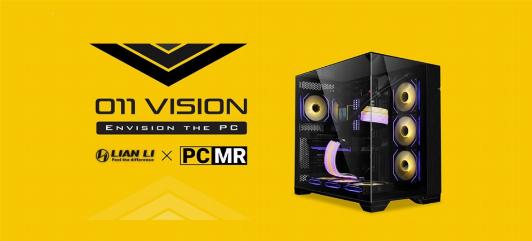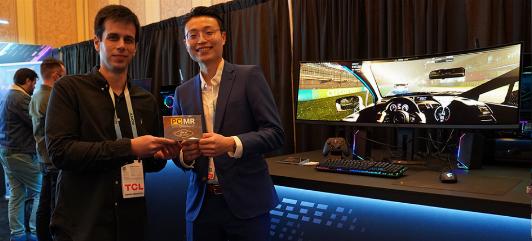RTX 4070 SUPER & 4070 TI SUPER - BENCHMARKS
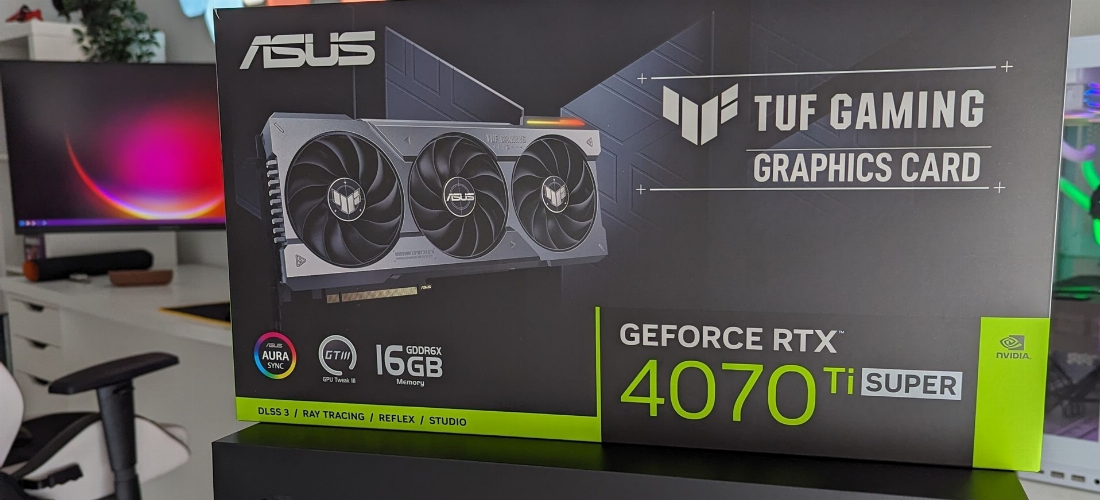
Yes, it's not a meme. There really is an RTX 4070 Ti Super, and it performs quite well. Nvidia is releasing the new Super line of GPUs, this time for the RTX 4000 series of graphics cards.
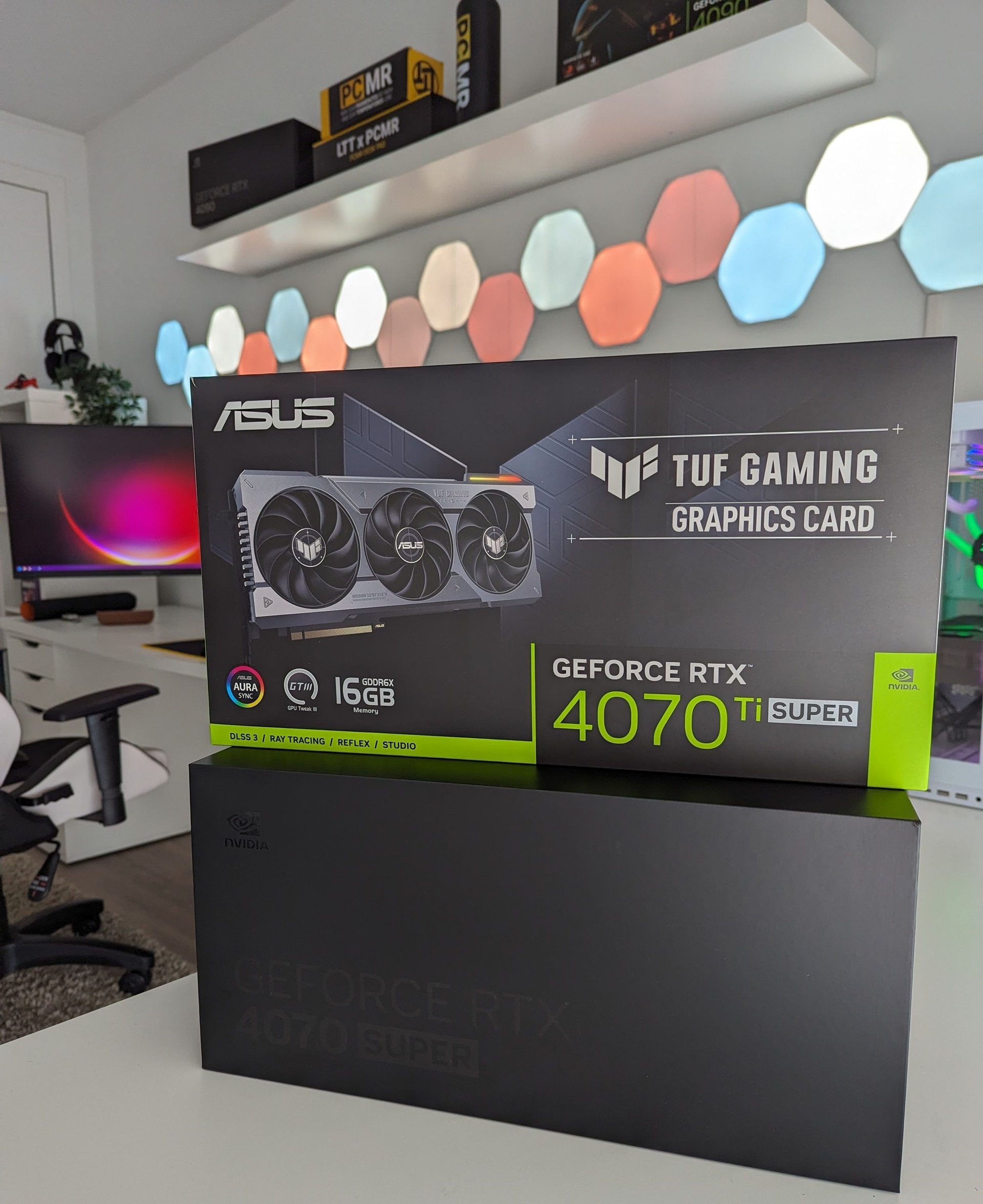
First and foremost,
SPECS
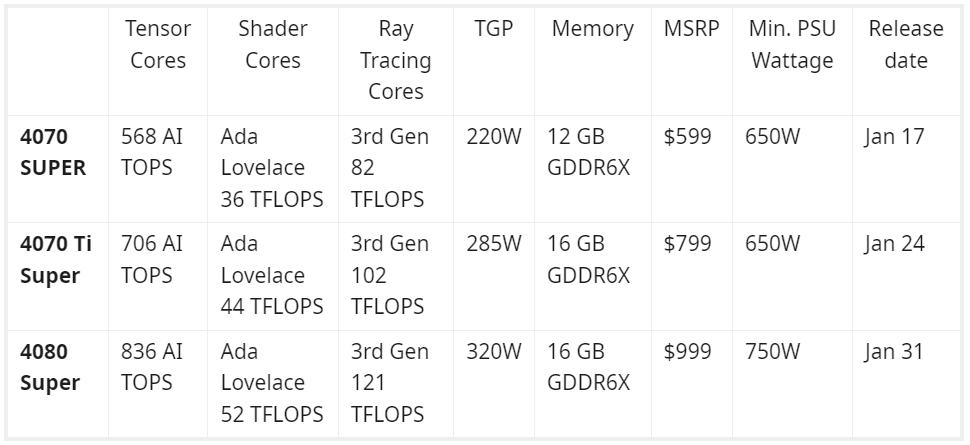
You may immediately notice some interesting facts: The pricing on the 4080 Super, together with its specs, seems to be a direct opponent to a space that was previously occupied by a well-established AMD option: the 7900 XTX. And, behold, that same card got an almost immediate price cut because of it.
All of these GPUs are DLSS 3.5 capable, but none of them are DisplayPort 2.0 compatible (which is expected but still would be nice to have).
All of them use the 12V-2x6 power connector revision, so in theory, they should fix any issues the old one (the original 12VHPWR) could have, as well as be all fully compatible with each other.
The 4070 Super is a slight evolution, spec-wise, of its non-Super sibling. Around 15 to 20% increase in CUDA Cores, and the same L2 Cache as the non-Super 4070 Ti, and should be sandwiched in between the two of them, performance-wise.

The new blackout look for both the 4070 Super and 4080 Super GPUs looks great but is quite the fingerprint magnet.
The RTX 4070 Ti Super uses the same silicon as the RTX 4080, so that should help it battle it out for a competitive position in the market, particularly against the 7800XT. It also comes with 16 GB of GDDR6X which is something we definitely can praise. There is no reason why a card in this class should come with any less.
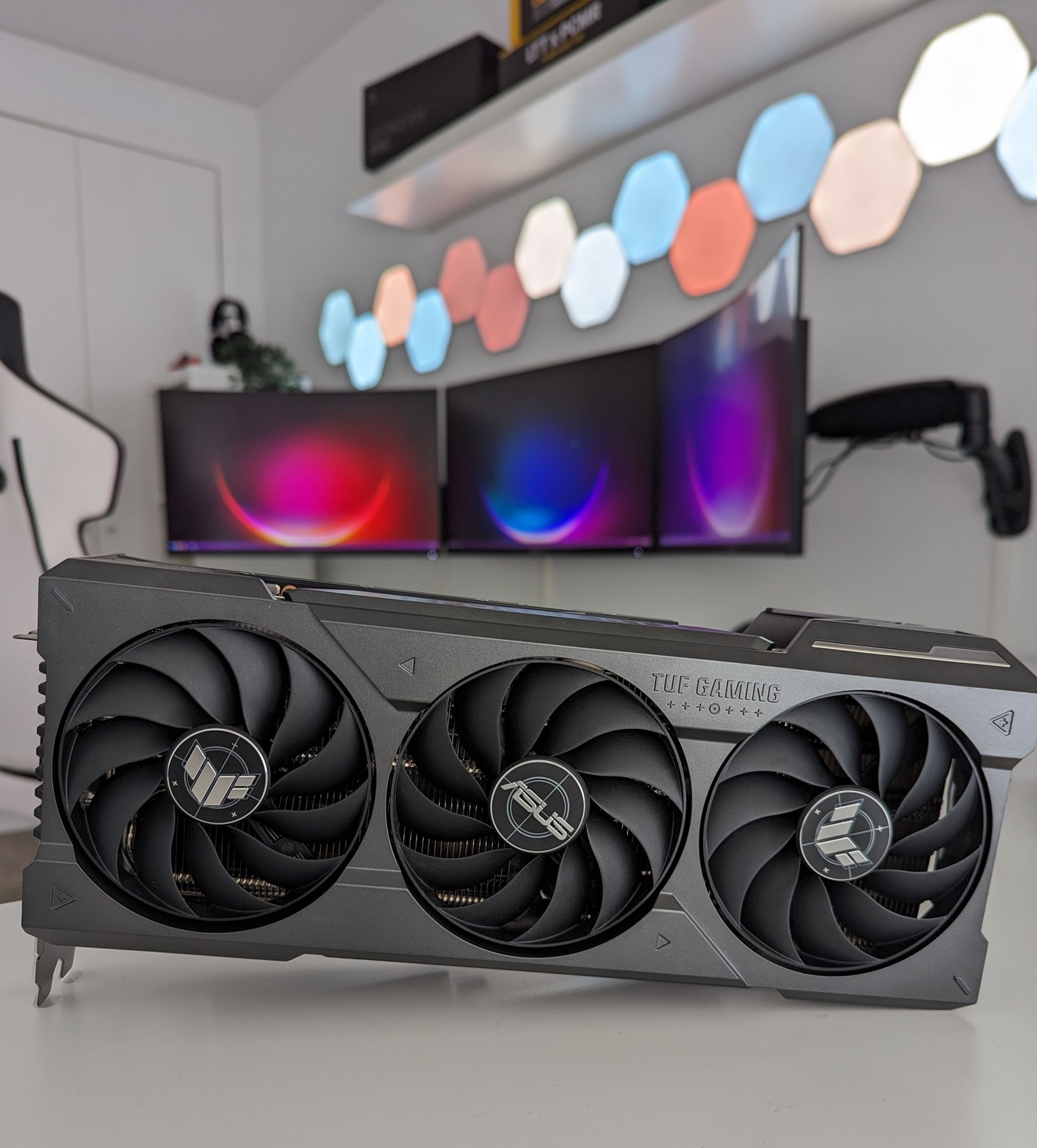
Nvidia is not making a Founders Edition version of the 4070 Ti Super; pictured is the ASUS TUF version.
Testing and benchmarks
The testing hardware we've used for all the benchmarks shown in this article is:
Intel i7 13700k - 16 core/24 threads CPU
Lian Li Galahad II LCD AIO Cooler
AORUS Z790 PRO X Motherboard
64GB (4X16GB) Corsair Dominator Platinum RGB DDR5-5600
Lexar NM720 SSD
The goal is to provide a test bench that reflects a somewhat common configuration for a very gaming-oriented user who opts for very high-end hardware but still takes into consideration the overall price to performance features and the aesthetics of their build. We feel that this is a good representation of a user who is considering graphics cards at this price point.
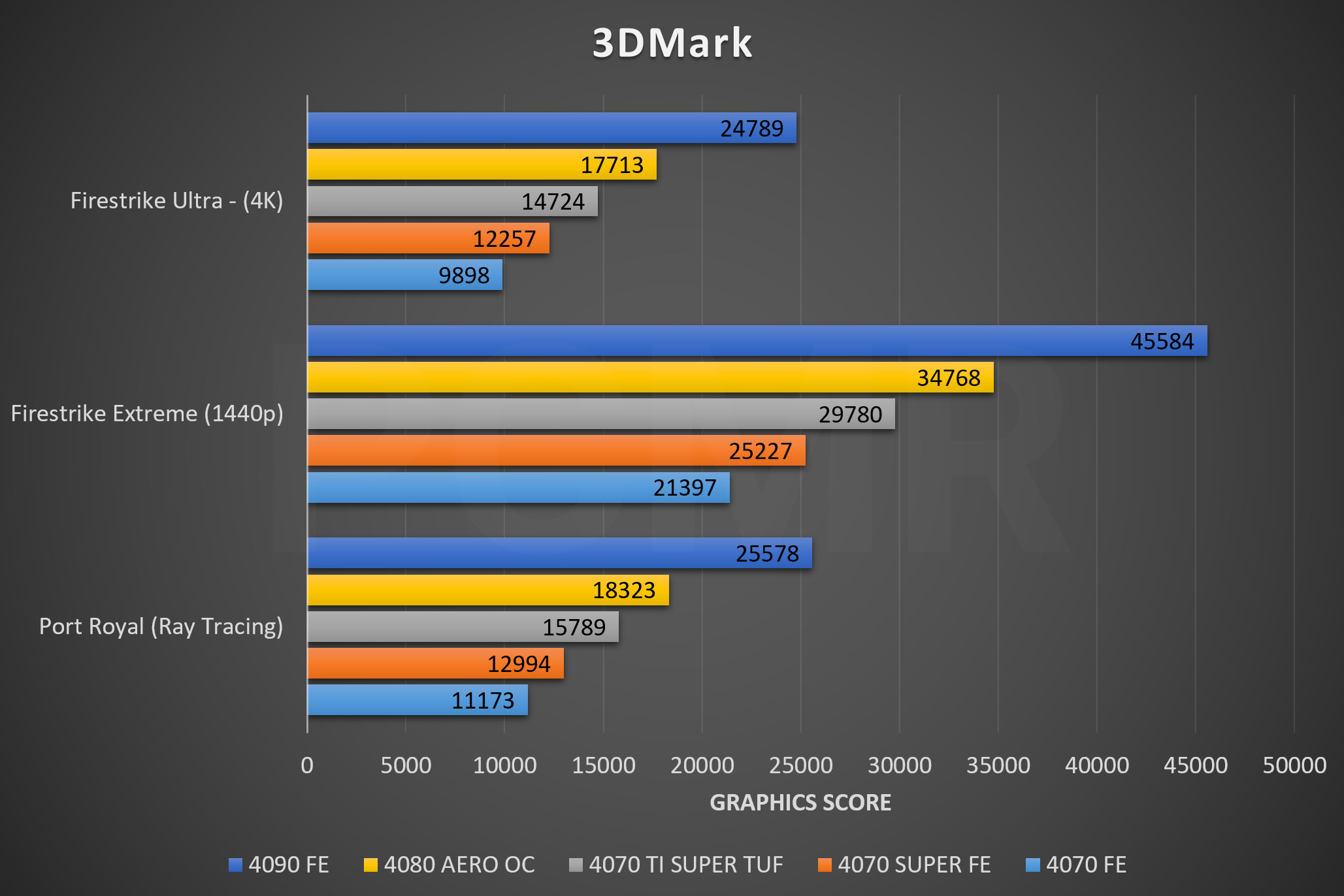
The first benchmarks show an obvious picture. Nvidia is really, really good at making sure its graphics cards sandwich almost perfectly between themselves, performance-wise. While the behemoth RTX 4090 does lead the pack by a large margin (which it should, given the specs and price), pretty much the entire 4070 line, as well as now the 4080, all seem like a somewhat similar upgrade over the lower iteration of each card.
Both the 4070 Super and the 4070 Ti Super are indeed relevant upgrades over their non-Super counterparts. The 4070 Super shows a relevant increase in rasterizing performance over the 4070, while only a "normal" increase in ray tracing capabilities. It looks like a wonderful card in its price-range, but let's see what the next tests show.
As for the 4070 Ti Super, and while we are not comparing it to the 4070 Ti FE, simply because Nvidia hasn't provided us with one to test, it's clear that it's reaching closer to 4080 performance levels than we initially expected.
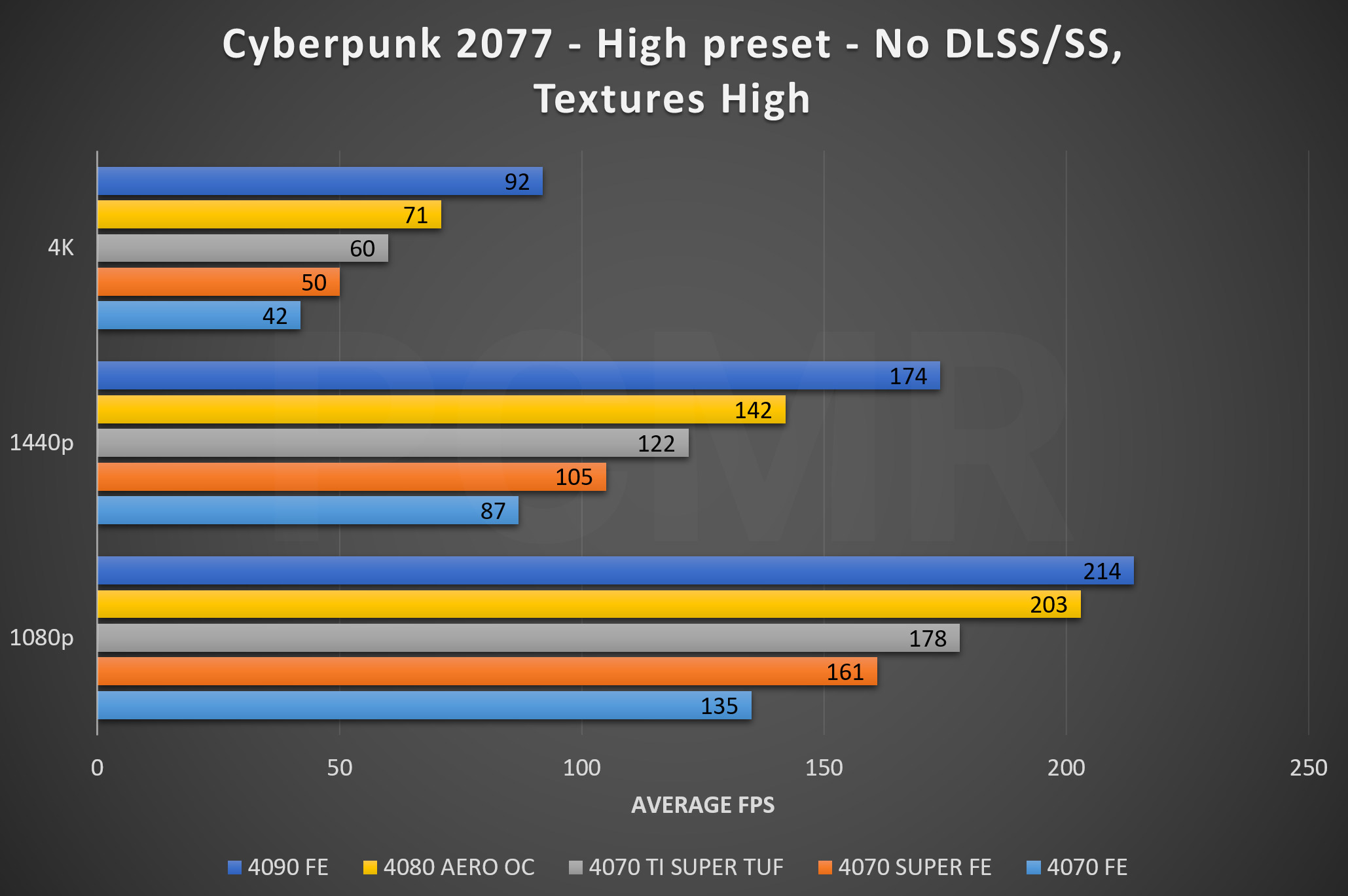
Moving from synthetic benchmarks to actual gaming, with Cyberpunk 2077 the trend continues: The 4070 Super holds a 20% lead over the non-Super at pretty much all resolutions, but this is a very demanding game, particularly at 4K. The 4070 Ti Super shows the same direction, albeit not quite as pronounced, but we do see some initial signs of 1080 CPU-bound situations, particularly with the Ti.
Price per FPS, wise, the 4070 Super shows a constant advantage here.
At 4K, we're seeing the 4070 Ti Super cost about $13.30 per frame-per-second, while the 4070 Super gets it down to just under $12.
At 1440p, the trend continues, the 4070 Ti Super will run you about $6.50 per FPS, and the 4070 Super about $5.70.
At 1080p, $4.50 and $3.70 respectively.

We're deep in CPU-bound territory at 1080p now (a trend that will continue), which shows that if you're looking to get one of these cards, you would do well to get a new monitor (ignoring specific situations such as competitive/esports, etc). If you're unaware of what this means, and as a brief oversimplification, this means that at 1080p your GPU will be left waiting for your CPU to complete its own work, before it can do theirs, leading to the very small differences you see at these lower resolutions. To increase FPS you would need a more powerful CPU, which probably doesn't make sense anyway without, again, a monitor upgrade.
At 1440p things change, and the healthy performance increase between the 4070 Super and the non-Super is showing, same as the 4070 Ti, which even at 4K is aiming for almost 4080-like results.
On what concerns price per FPS, and considering only 4K, since we're mostly CPU bound in other scenarios, the 4070 Ti Super will run you about $8.20 per FPS, and the 4070 Super about $7.10.
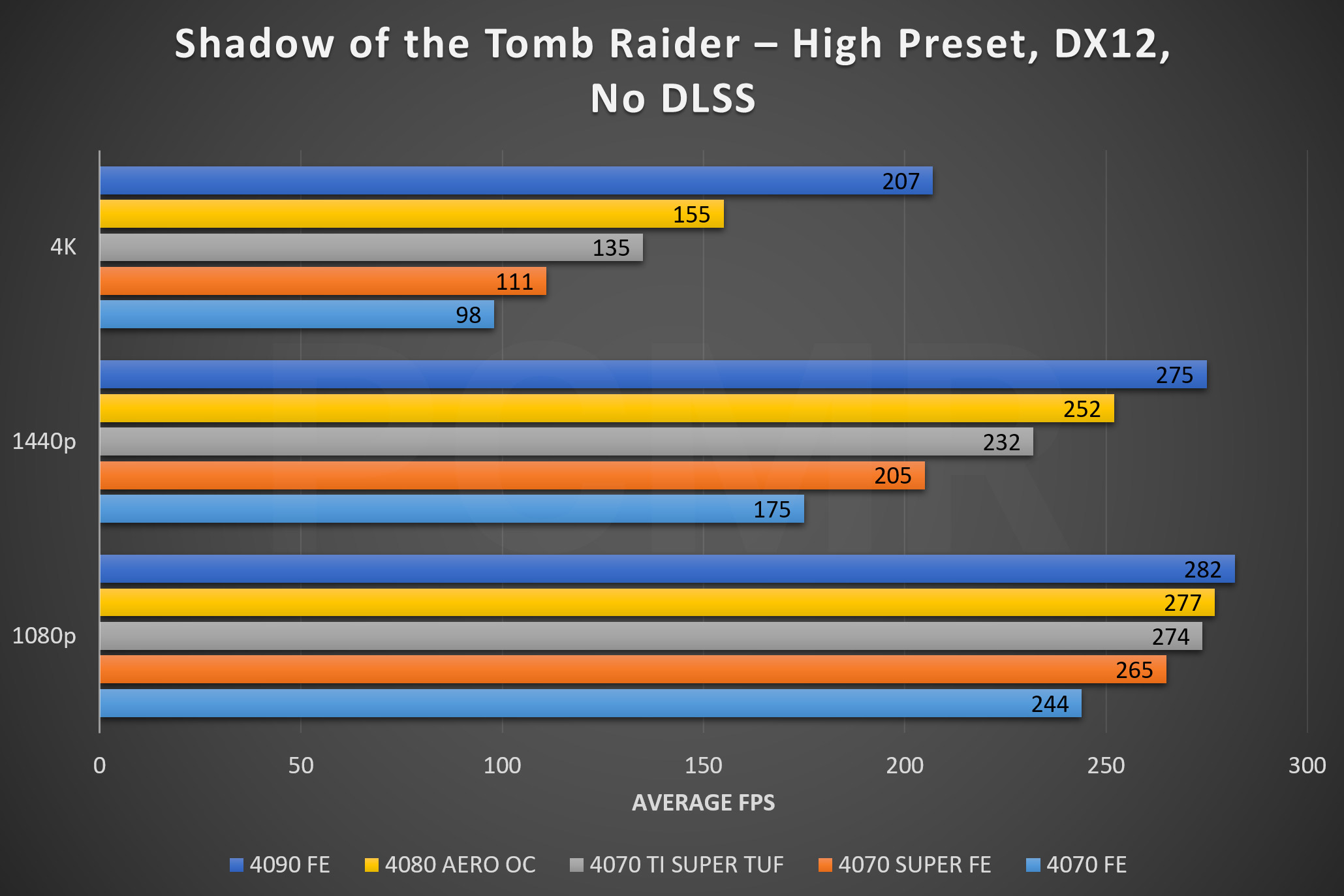
In a DX12 situation at 4K, it does seem like the 4070 Super isn't quite 20% better than the non-Super, much still very much a healthy 13% or so percent in front. The 4070 Ti does make use of its spec boost and extra VRAM to, again, fly to some levels that may make the anyone who purchased a 4070 Ti or a 4080 recently, a bit anxious.
Price per FPS, at 4K we're seeing the 4070 Ti Super cost about $5.90 and the 4070 Super running you about $5.40, which while cheaper is a smaller gap than what we've seen so far. The "cheaper, but not by much" trend continues at 1440p, with $3.40 and $2.90 USD per frame per second, respectively.
CONCLUSION
In an ideal world, the 4070 Super is what the 4070 should have been. Overall, a 13 to 20% increase in performance over the non-Super 4070 in most 1440p and 4K scenarios is a great result, and at the same price level as the non-super was, it is much more acceptable. Couple that with the price cut that the non-Super 4070 will get and you have two very interesting options in the market, particularly if you're into Nvidia ecosystem-specific tech such as frame-generation, DLSS and Video encoding capabilities. Otherwise, even the AMD alternatives got price cuts (due to these releases) so there are good options for everyone. However, at $550 USD, the 4070 seems like a bad choice compared to the $599 USD 4070 Super, and Nvidia is aware of this. If you're considering one of the two, get the Super for the extra 50 dollars.
As for the 4070 Ti Super, it pretty much kills both the 4080 and the 4070 Ti (yes, the 12GB card retailing for $800 USD, surprise surprise). There just isn't space (at least for Nvidia, financially. There is always space for good GPUs at good prices for all of us PC enthusiasts) for 4 GPUs in the $800 to $1000 USD price point, which should be obvious if you also look at the benchmarks above. Both the 4080 and 4070 Ti will be all but discontinued and soon the real choices will be:
- 4070 - $549.
- 4070 Super - $599.
- 4070 Ti Super - $799.
- 4080 Super - $999.
- 4090 - $1599, but realistically, at the time of writing this, $1999.
The 4070 Ti Super, while interesting, isn't quite as interesting as the 4070 Super. The smaller sibling has the price to FPS advantage and is everything we wanted the 4070 to have been at launch at this price point.
Nvidia chose to take safe, calculated steps here and fully fill the market both price and performance-wise. Let's see what the 4080 Super has to offer, performance-wise, to confirm this opinion, or not.
Resources:
See what the PCMR community has to say about:
The 4070 Super
The 4070 Ti Super
Check the announcement Megathtread.

